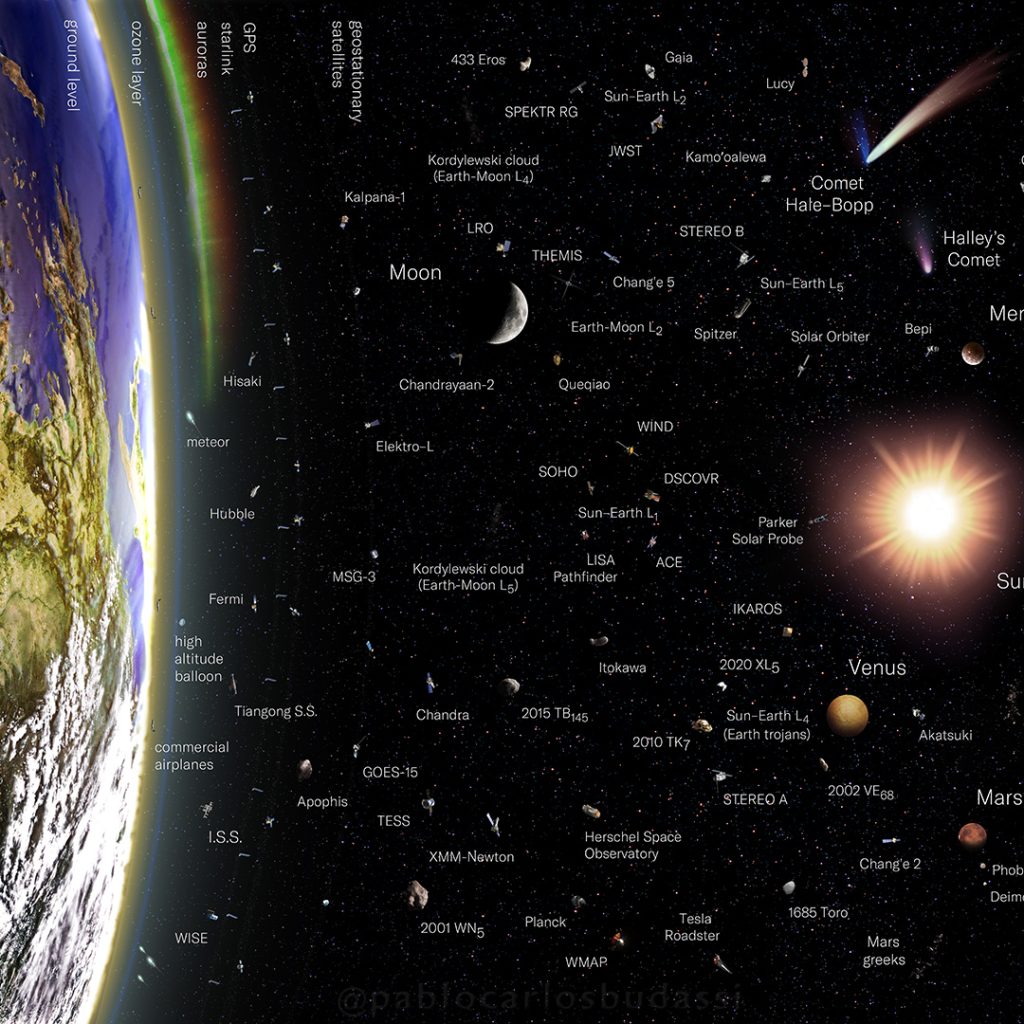This vertically oriented logarithmic map spans nearly 20 orders of magnitude, taking us from planet Earth to the edge of the Observable Universe. The scheme locates notable astronomical objects of various scales: spacecraft, moons, planets, star systems, nearby galaxies, and notable large-scale structures are some of the objects indicated.
The image is intended to provide a precise and clear representation of the differences in distance between a vast number of celestial bodies in the cosmos.
Available in different layouts: (vert./horiz./scale bar/no text)
Vertical Layout English Annotations:
Vertical Layout English annotations with Scale Bar included:
( ⇈ version featured at VC)
No annotations – the illustration alone:
Horizontal Layout English Annotations:
Horizontal Layout English annotations and Scale Bar included:
High quality metal plates (3 parts horizontal):
High quality metal plates (3 parts vertical):
Zoomable Explorer of the Map:
Earth’s orbits and inner solar system
outer solar system
Milky Way galaxy
nearby galaxies and the Cosmic Web
“… rather than a linear scale, which would take several quintillions of Earths lined end-to-end to reach the limits of the observable Universe, a logarithmic scale holds far more cosmic insights to an onlooker. From here to the limits of what we can see, [this is] a breathtaking logarithmic view of the Universe, brought together in one fantastic, artistic finale by artist Pablo Carlos Budassi.” (
Starts with a Bang)
Vertical Layout English Annotations:
No annotations:
Horizontal Layout English Annotations:
Vertical Layout English annotations with Scale Bar included:
Horizontal Layout English annotations and Scale Bar included:
High quality metal plates (3 parts horizontal):
High quality metal plates (3 parts vertical):

◇ Special versions with tilted text for hanging in your stairwall ◇
Other Languages:
(some are only available in a horizontal layout 2020 version)
German (Deutsch) Horiz 2020:
French (Française) Vertical 2023:
French (Française) Horizontal 2020:
Spanish (Español) Vertical 2023:
Spanish (Español) Horiz 2020:
Portuguese (Português) Horiz 2020:
Turkish (Türkçe) Horiz 2023:
Italian (italiano) Horiz 2023:
[Italian translation and composite by Pietro Bora]










